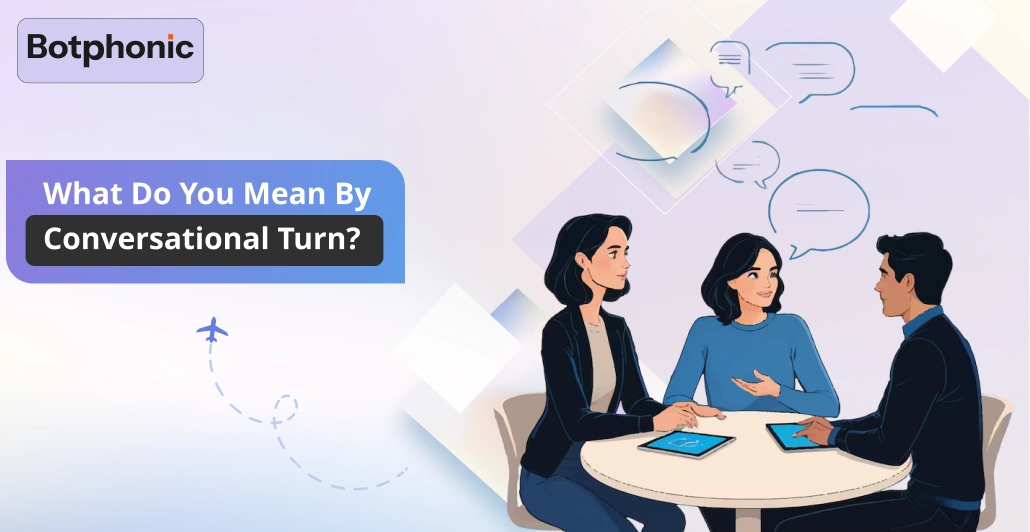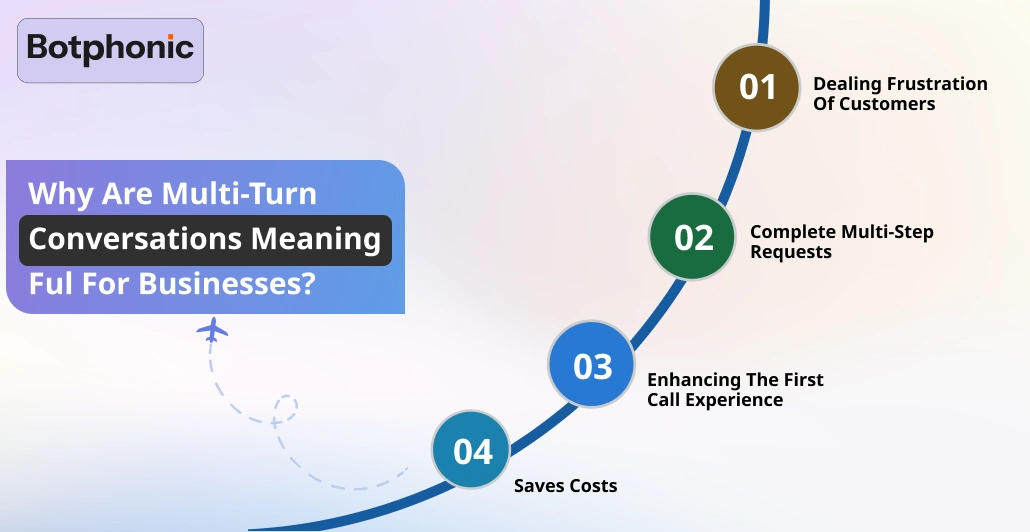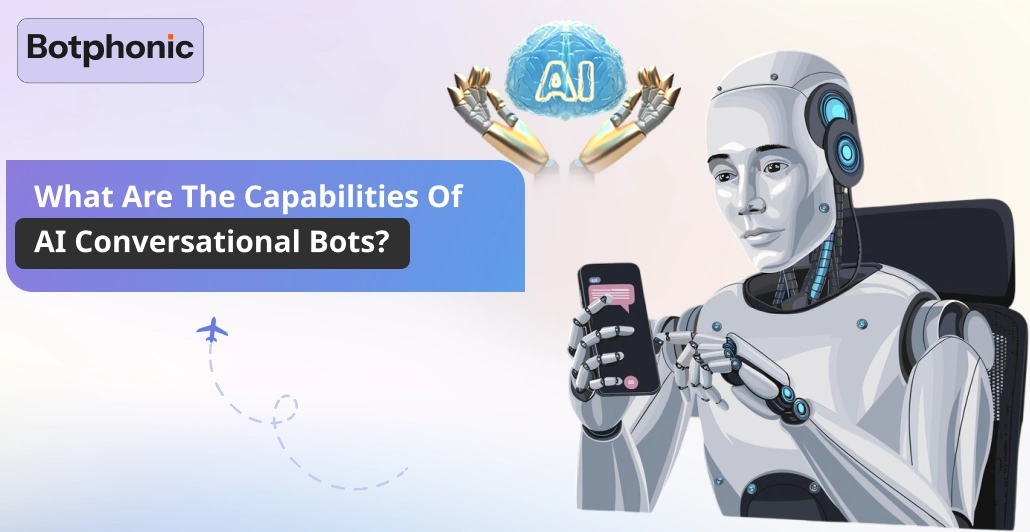
Summarize Content With:
Summary
Every user likes it when chatbots remember what they have previously said. And this is what happens with multi-turn conversations. They mean great support, better engagement, and conversations that convert customers.
Introduction
Just like people were really into mobile apps in 2012, the same has happened with chatbots. Almost every one of us has had a chance of interacting with a chatbot on any of the following websites. These chatbots are designed to answer our basic questions. But in many cases, people get frustrated as an AI chatbot cannot provide an efficient answer.
Auto generated answers are not ideal for conversing and can lead to unclear answers. Hence, chatbots lack a feature, and it is a multi-turn conversation. People feel that natural language is the best way to carry out a conversation. It could only be possible through AI conversational agents.
Unclear what multi-turn conversations are and how they can be helpful to your business. Let’s discuss it in detail about AI call assistant.
What do you mean by conversational turn?

One of the most essential aspects of carrying out conversation is taking turns. It is problematic when you have to both speak and listen at one time. Therefore two members that are conversing should take their turns about who is speaking now and who will speak later. One of the simplest ways to converse is single turn conversation.
If we view it from the perspective of chatbots, a single turn is their most preferred conversation. It includes only the exchange of a single dialogue between the user and the bot. The user will ask their question and then receive an answer from the other end.
For example:
User: Is a pediatrician available on Saturdays at your hospital?
Chatbot: No, the pediatrician is only available on Wednesday.
But it is not always possible to end the conversation with a single exchange. Many times, multiple turns have to be taken. They have to exchange dialogue back and back many times to complete the conversation.
User: Hello, I want to reschedule my appointment with the doctor.
Chatbot: May I know when and at what time it was scheduled?
User: It was scheduled for 10/07/25 at 11:00 AM.
Chatbot: Ok, and when do you want to reschedule it?
User: At 11:30 on 12/07/25.
Chatbot: Okay, your appointment is rescheduled.
Note: Use the conversation above to create image
Hence, in this type of conversation where more than one turn is necessary is called a multi-turn conversation. If you are aware of how to develop a single turn, then only two more capabilities are required to build a multi-turn conversation.
How do you build a multi-turn conversation?
A multi-turn conversation is a step in a conversation where multiple back-and-forth exchanges take place. This is a feature of chatbots and conversational AI assistants. They understand the needs of the user and accordingly continue the conversation. But how to build it? Here’s your answer:
1. Context retention
Chatbots can remember old conversations. Hence, this will help them generate more relatable answers and responses that are informative. They employ NLP for assessing the input of users to maintain context throughout the conversation. One can employ two ways for retention of context:
- End-to-end neural modelling
- Dialogue state tracking
The first method is used for implicit context retention, which will train chatbots through neural networks. Therefore, it can remember and evaluate context without any explicit storage.
On the other hand, dialogue state tracking works by analyzing the ongoing request of the user. And with every turn, the data is updated as per the expectations of the user.
2. Dialog policy
Many times, it is very crucial that a chatbot gather additional information. It is because many customers provide a request that does not match your business goals. Also, many times users might even provide too many specifications that could be problematic. Therefore, in this scenario, follow-ups are necessary to come to a mutual term that benefits both.
Dialog policy is a necessary tool to develop multi-turn conversations. It will work on the back-end APIs so that the chatbot can handle any situation.
Why are multi-turn conversations meaningful for businesses?

Customers today are brighter than ever, and buying has even become a complex process. Users expect to shop from their home and move through multiple channels before they decide. And in each step of the buying process, you have to value your customers. As per a report from McKinsey, companies that use AI-based conversational assistants have a 25% rate of conversion of customers.
So, how can businesses do that with ease? The answer is through a conversational AI assistant. With its help you can ensure a smooth conversation experience that saves time for both. Also, providing multi-turn conversation could develop a personalized experience for your users.
Want to know more benefits of conversational automation? Here are some of them:
1. Dealing frustration of customers
Modern-day tools like ChatGPT and Gemini offer multi-turn conversations. Many traditional tools don’t employ single-turn conversation and don’t retain their previous memory. It could be frustrating. On the other hand, multi-turn conversation lets users speak naturally to resolve the issue. Therefore, there is no need to state the problem again to carry on the conversation. Conversational AI software like Botphonic AI remembers the previous data to ensure a smooth customer experience.
2. Complete multi-step requests
Users have different mindsets, and there is no guarantee of what they will ask. For a person, your conversational AI assistant can solve it in one go, but for some, it might take 5 to 6 turns. Hence, your chatbot must be ready for this to provide an unmatched customer experience.
Your bot must answer with the most appropriate dialog and not ask them to go through a checklist first. When it does so, it would feel like an unnatural way of talking that most of the robots do. Therefore, it must remember where the chat was left beforehand and continue it rather than repeating it.
3. Enhancing the first call experience
What if you have to wait for a long time before you reach the final person of customer service who can solve your worries? It is annoying and troublesome. It is what happens with most of the business owners. Customers get frustrated and don’t prefer buying again.
Therefore, choose AI voice agents like Botphonic AI that use NLP and machine learning to answer as many questions as asked. They are not like your traditional chatbots. They can:
- Analyse human needs
- Retain the customers
- Make quick decisions
- Empathetic and possesses excellent research skills
One of the main goals of the business is to resolve the queries of customers as soon as possible. You cannot expect customers to repeat the question many times. Researchers show that chatbots could reduce call time and enhance call metrics.
4. Saves costs
AI chatbots are not just your normal assistants; they are AI-based customer services. It makes your customer feel like they are conversing with humans. As per research, it is proven that using chatbots could help them save money. By employing chatbots, you can cut costs that you have to spend on human workers. You need to spend a minimum on training and hiring new agents. Additionally, chatbots could avoid the chances of errors that can lead to overspending.
Hence, companies using AI for customer service are progress way ahead of those that are not.
What are the capabilities of AI Conversational bots?

There are certain features that conversational AI applications possess that could help them transform your business. Here is a list of those:
- Preservation of context: For ensuring multi-turn conversation it is necessary to preserve the context. It can be done so by preserving context with the help of relevant information. AI conversational platforms have the ability to get access to the history of conversation.
- Consistency in conversation: It is necessary to maintain the flow while conversing with the users. Therefore, AI chatbots maintain flow using coherence to avoid any errors.
- Natural Language processing: AI-based conversational software employs natural language processing. It helps them respond just like humans and retain context throughout the chat.
- Flexible: AI conversational chatbots are flexible and can converse about multiple topics at once. Therefore, customers can freely ask questions in the middle. And later, the bot will also remember when the conversation was left.
How does Botphonic AI facilitate multi-turn conversation?
Botphonic AI is known for providing a platform that doesn’t need code and has an easy-to-navigate interface. Hence, a person can develop voice agents within a few minutes. AI conversational agents can deal with vast amounts of calls in any language and at any time.
Through Botphonic’s AI conversational agents, you can:
- Launch and develop your AI assistant within minutes.
- Provide automated voice and chat services for different platforms for an omnichannel experience.
- Ensure customers get the most appropriate answers as per their personal needs instead of pre-set responses.
- Analyze and retain customer responses for further conversations in the future.
Conclusion
Multi-turn conversations are one of the most necessary things in this evolving world. Customers expect to ask about multiple things, and that might need numerous dialog exchanges. Hence, this technology could help the chatbot retain its memory while further resolving user issues swiftly. It can deliver the best experience by going through complex data, keeping history, and adapting to the customer’s demands. Day by day, this technology is evolving more, and it will become a necessity for the next generation of intelligence. Therefore, conversational AI platform are designed to be the future of businesses.

